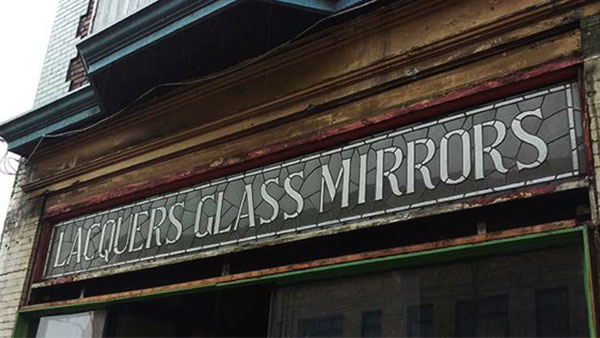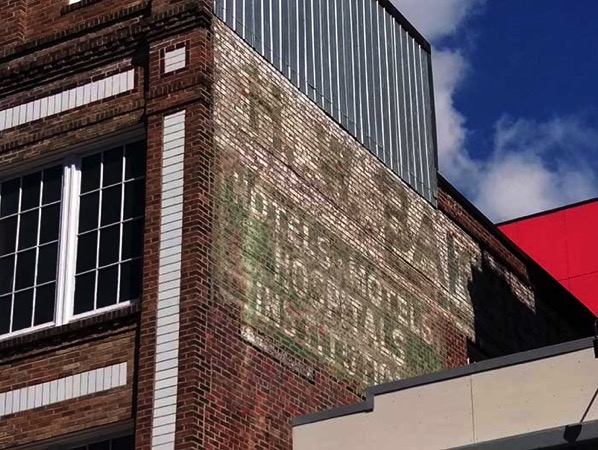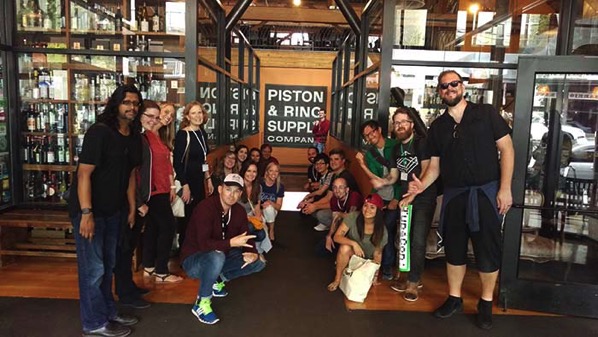Stepping Through Historical Seattle on a Typographic Pub Crawl

When I found out that the annual North American typography conference, TypeCon, was going to be in my hometown of Seattle, I decided to create a conference event that would somehow provide a unique experience to typographers from out-of-town. My love for the city is deep since I’ve lived here my entire life (aside from spending my undergraduate years in Spokane, WA and at graduate school in Scotland). Seattle—nestled between the water and the mountains—offers everything our art-creating, coffee-drinking, airplane-making, software-programming locals desire.
The knowledgeable Paul Shaw was already scheduled to give his famous TypeCon typography walk in downtown Seattle, so I wanted to choose a different neighborhood and add a little something to make it unique. After all, my first font release, Bemis, in 2013, was based on the 1917 inscription on the historic Bemis building in Seattle. I loved the look of the high-waisted capital letters, so I created a historical revival inspired by the B-E-M-I-S letterforms inscribed onto the front of the brick building. KUOW and The Seattle Times found the project intriguing, so it received a bit of publicity.

So combining my interests in typography and in historical Seattle, it seemed as though I might have something to offer to fellow typographic geeks.
Ghost Signs
There are a few neighborhoods in Seattle that still house old lettering and ghost signs, but Capitol Hill is the one that has the most intact signage in a small, walkable area. I launched my research by meeting with the Seattle Architecture Foundation and also found online archives of the properties with photos and architectural details.
Over the next few months, I began unraveling a little-documented history of the city. I talked to developers, engineers, architects, designers, and store owners, piecing together what I could find out about the typographic history of Seattle’s Auto Row—an area in Seattle’s Capitol Hill neighborhood developed around 1910. Its oversize showcase windows and other architectural details on the buildings reveal their origins as auto showrooms.
Uncovering glimpses of the past kept me on a never-ending journey of curiosity. One day I stopped by one of my favorite spots—the Hartford Glass Co. at 911 E. Pike—which has a fairly legible ghost sign on the west side of the brick building.

It was under construction, and I chatted with a worker who informed me that I was lucky to see the Laquers Glass Mirrors tiled signage in the front of the building. It had been covered up for years—probably the reason why it still remained intact—and would soon be covered up again.
The reputable developer Dunn & Hobbes earned my great respect throughout my research, as I realized the generous effort it has put into the historic preservation of Capitol Hill. Its development of many buildings, including the Piston & Ring Building, show obvious intentional preservation of the past. The entrance of the Piston & Ring Building showcases incredibly well-preserved original signage on display.
The Baker Linen Building ghost sign was an absolute gem of a find, retaining legible lettering on the south-facing brick wall. When I emailed Liz Dunn to see if she had any details about the sign, she responded: “Too bad half of it fell down in the Nisqually earthquake!”

By the time the day of my typographic pub crawl arrived in August 2016, I knew that my research could be an endless project. The group of 20 TypeCon attendees seemed to appreciate my obvious enthusiasm for what I had uncovered. While we walked past 18 typographic sites, we also enjoyed delicious Seattle microbrews at Six Arms (originally Gallagher’s Fine Cars in 1910), Comet Tavern (allegedly housing a network of tunnels used to smuggle liquor during prohibition) and Elysian Brewery (one of Capitol Hill’s oldest breweries).

When you walk through the typographic ruins that still exist in Seattle, it’s easy to see why developers might not take the time to maintain this part of our history. To most people, these signs and crumbling walls—with bits of paint worn over the years—must seem a disgrace to our city. But to those of us who study typographic forms of the past and who are inspired to learn from what has been created before us, they not only hold a wealth of historical information, but also ignite inspiration for a blending of the old and the new.
This article was last modified on May 31, 2017
This article was first published on May 31, 2017





Cool idea.